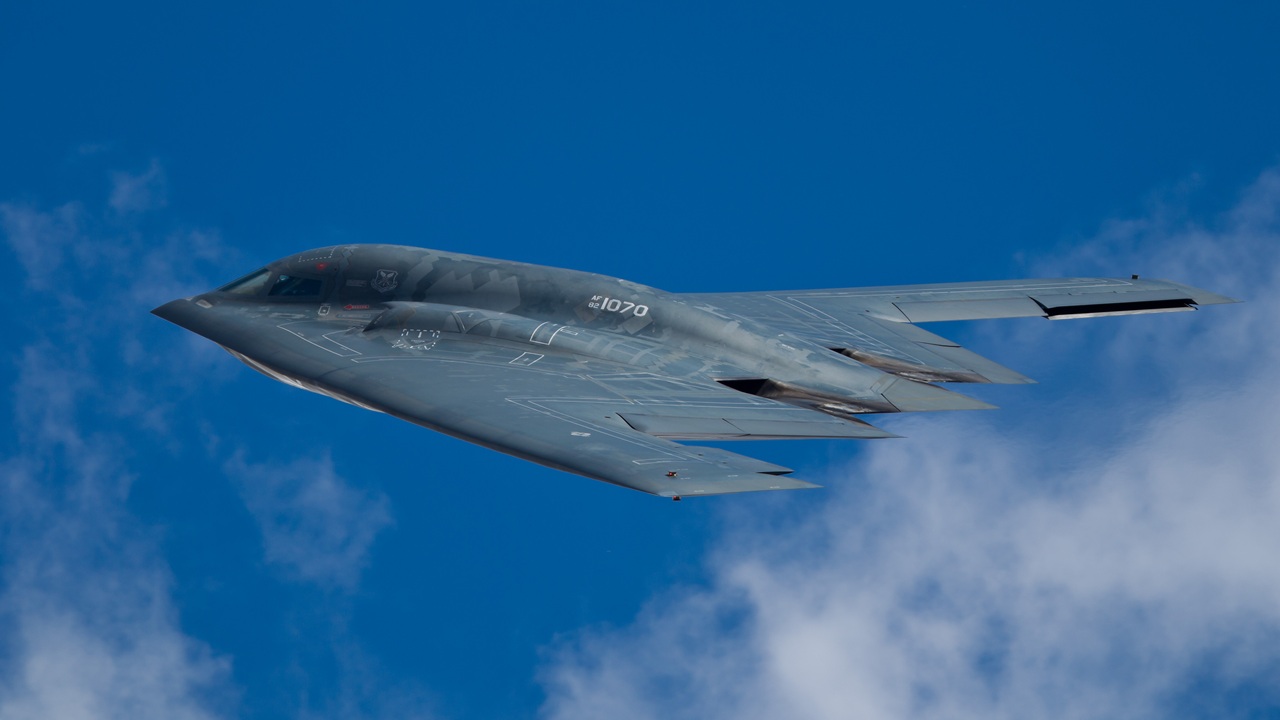
Here’s What Aircraft ‘Stealth’ Really Means
“Stealth” is not the result of one secret formula known only to the Pentagon. Instead, it is the result of many design and technology adaptations—ranging from the shape of an aircraft to the paint it uses.
Stealth technology paired with fighter jets and strategic bombers creates a formidable combination.
The U.S. military leads the world in stealth technology with several operational stealth fighter jets and strategic bombers. These aircraft are also the best in their field. Fighter jets like the F-22 Raptor and F-35 Lightning II and strategic bombers like the B-2 Spirit and (the incoming) B-21 Raider offer policymakers and military planners great options in peace and war.
But what makes an aircraft stealthy? And how does an aircraft maintain its stealth attributes?
All About Stealth Aircraft
To begin with, stealth technology does not make an aircraft “invisible,” either to the naked eye or to radar. This is impossible. Instead, effective stealth technology reduces an aircraft’s radar cross-section. As such, while a person can physically see a stealth aircraft at any distance, a radar might not be able to pick up an aircraft from a long distance away—or distinguish it from a non-threatening flying item like a bird.
Moreover, “stealth” is not the result of one secret formula known only to the Pentagon. Instead, it is the result of many design and technology adaptations—ranging from the shape of an aircraft to the paint it uses.
Since the U.S. military cannot alter the design of an aircraft after it has been built, it often maintains or improves stealth capabilities by updating the technology on board an aircraft, but also by reapplying special paint.
“Unlike traditional maintenance, which focuses on repairing mechanical systems, low observable work requires a combination of technical precision and advanced material knowledge,” the Air Force states about the process of reapplying this paint. “The goal is to preserve the aircraft’s low signature by restoring surface integrity and maintaining the stealth characteristics essential for operations.”
Stealth Paint Needs a Lot of Maintenance
Air Force maintainers spend a lot of time working on a fighter jet that needs to have its stealth coat maintained.
“Our job is to ensure that by the time the jet leaves the line, its low observable systems are mission-ready, giving the pilot the assurance they can operate in contested airspace with minimal risk of detection,” Senior Airman Jadon Anderson, a low observable technician assigned to the 48th Equipment Maintenance Squadron, said in an Air Force press release about maintaining the stealth attributes of F-35 Lightning II fighter jets stationed in the United Kingdom.
“You could have a jet that flies and fights perfectly, but if it lights up on radar, the advantage is gone,” Tech. Sgt. Samuel Holt, the low observable noncommissioned officer in charge at the 48th EMS,” stated. “Without [low observable], you’re not projecting power, you’re just showing up on someone’s scope. That’s the difference between shaping the battlefield and reacting to it.”
Proper stealth can make the difference between life and death or success and failure in combat. So, the Air Force maintainers servicing stealth fighter jets have a key job.
“You can’t cut corners in [low observable],” Holt added. “Every repair is a matter of trust between the maintainer and the pilot. We’re giving them the ability to fly with peace in mind.”
About the Author: Stavros Atlamazoglou
Stavros Atlamazoglou is a seasoned defense journalist specializing in special operations and a Hellenic Army veteran (national service with the 575th Marine Battalion and Army HQ). He holds a BA from the Johns Hopkins University and an MA from the Johns Hopkins’ School of Advanced International Studies (SAIS). His work has been featured in Business Insider, Sandboxx, and SOFREP.
Image: Shutterstock / Anatoliy Lukich.